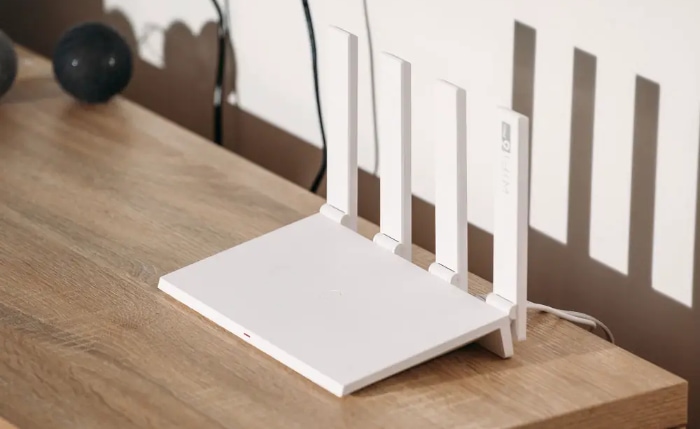5G vs. Wi-Fi 6: Transforming Global Connectivity

Diving into the world of cutting-edge technology, we find ourselves at a crossroads between two giants: 5G and Wi-Fi 6. These terms are more than just tech jargon; they're the driving forces behind a major shift in our digital experiences.
With 5G, the promise is of unprecedented speeds transforming communication, while Wi-Fi 6 brings efficiency and strength to our home and work networks. But what really sets these technologies apart, and how do they compare in practical terms?
What is 5G?
5G stands for the fifth generation of cellular network technology. It's the latest advancement in mobile internet connectivity, offering significantly faster speeds and more reliable connections on smartphones and other devices than its predecessor, 4G.
Evolution from 1G to 5G
The journey from 1G, the first generation of cellular technology, to 5G has been marked by substantial improvements. Each generation has enhanced the way we communicate, with 5G being the latest milestone.
It's not just a step up from 4G; it's a leap that promises to unlock new possibilities.
Key Features of 5G
The primary characteristics of 5G include high data speeds, reduced latency, and the ability to connect a massive number of devices simultaneously. These features make 5G a game-changer for both individual users and industries.
Speed
5G networks can deliver data speeds up to 100 times faster than 4G. This speed translates into downloading high-definition movies in seconds and experiencing smoother streaming.
Latency
Latency refers to the time it takes for a signal to travel from the source to the destination and back. 5G dramatically reduces this delay, offering near-instantaneous data transfer. This improvement is crucial for applications like virtual reality and telemedicine.
Capacity and Connectivity
5G networks can support a much larger number of connected devices than 4G networks. This capacity is essential for the growth of the Internet of Things (IoT), where many devices, from fridges to cars, are connected and communicate over the internet.
The Global Rollout of 5G
Countries around the world are in various stages of deploying 5G networks. The rollout involves upgrading existing cell towers with 5G technology and, in some cases, building new infrastructure. The pace of deployment varies, with some countries leading the charge and others still in the early stages.
What is Wi-Fi 6?
Wi-Fi 6, also known as 802.11ax, is the latest generation of Wi-Fi technology, succeeding Wi-Fi 5 (802.11ac). It's designed to improve network efficiency, provide higher data rates, and handle more connected devices.
With the increasing number of devices that require internet access, Wi-Fi 6 offers a significant upgrade in wireless technology, ensuring smoother and more reliable connections.
The Evolution of Wi-Fi Standards
Wi-Fi has evolved through various iterations, each improving on speed and reliability. Wi-Fi 6 is the newest in this lineage, building on the capabilities of Wi-Fi 5.
It's not just an incremental update but a considerable advancement that addresses the growing demands for wireless internet access in both public and private spaces.
Key Features of Wi-Fi 6
Wi-Fi 6 brings several improvements over its predecessors, focusing on performance and efficiency, especially in areas with many connected devices.
Increased Speed
Wi-Fi 6 provides faster data transfer rates compared to Wi-Fi 5. This means quicker downloads and uploads, and improved performance for high-bandwidth activities like streaming 4K/8K video and online gaming.
Improved Efficiency
One of the standout features of Wi-Fi 6 is its enhanced efficiency. It allows routers to communicate more effectively with multiple devices simultaneously, reducing wait times and increasing overall network capacity.
Better Performance in Crowded Areas
Wi-Fi 6 shines in crowded environments like stadiums, airports, and urban apartments. It handles numerous connections more intelligently, ensuring stable and consistent connectivity even in areas with many competing networks.
The Role of Wi-Fi 6 in Modern Connectivity
Wi-Fi 6 plays a crucial role in modern wireless connectivity by addressing the challenges posed by an increasing number of internet-enabled devices. Its ability to manage multiple connections seamlessly makes it ideal for both home and commercial use, especially as the Internet of Things becomes more prevalent in everyday life.
Performance Comparison

When it comes to 5G and Wi-Fi 6, understanding their performance capabilities is essential for grasping how these technologies will shape our digital future. By comparing their speed, latency, and capacity, we can get a clearer picture of what each technology offers and how they might complement or compete with each other in various settings.
Speed: The Race for Faster Data Transfer
5G is renowned for its exceptionally high speeds, potentially reaching up to 10 Gbps. This speed revolutionizes mobile internet, offering the possibility of downloading large files, streaming high-resolution videos, and playing online games with virtually no delay.
Wi-Fi 6 also marks a significant improvement in speed over its predecessor, Wi-Fi 5, offering speeds up to 9.6 Gbps. While these speeds are shared across all devices on the network, Wi-Fi 6 efficiently manages bandwidth among multiple devices, providing a consistently fast connection.
Latency: Minimizing Response Time
One of the standout features of 5G is its ultra-low latency, with response times potentially as low as 1 millisecond. This reduction in delay is critical for applications requiring real-time feedback, such as virtual reality, augmented reality, and autonomous vehicles.
Wi-Fi 6 also improves latency compared to its predecessors. Though not as low as 5G, the reduced latency is significant for everyday applications, enhancing experiences in gaming, video calls, and smart home interactions.
Coverage and Capacity: Handling Multiple Devices
5G networks offer extensive coverage and are designed to support a vast number of devices. They excel in both urban and rural areas, providing consistent service. The technology is particularly adept at handling high-density areas, ensuring stable connections even in crowded environments.
Wi-Fi 6 is specifically designed to improve network capacity, especially in dense environments. It employs technologies like Orthogonal Frequency Division Multiple Access (OFDMA) and BSS Coloring to manage network traffic more efficiently, allowing more devices to connect without a decrease in performance.
Use Cases and Applications
Exploring the practical applications of 5G and Wi-Fi 6 reveals how these technologies are not just about faster internet speeds; they're reshaping various aspects of our daily lives and work. From enhancing personal entertainment to revolutionizing industrial processes, the implications are vast and diverse.
5G: A Catalyst for Mobile and Industrial Innovation
5G's high speed and low latency make it ideal for improving mobile experiences. Users can enjoy smoother streaming, faster downloads, and more responsive online gaming.
This enhanced mobile connectivity also opens doors for advanced applications like augmented reality (AR) and virtual reality (VR) on smartphones.
Transforming Industries
5G is set to be a key player in industrial transformation. Its ability to handle massive data transmission and quick response times is crucial for applications like autonomous vehicles, which require real-time data processing.
Additionally, 5G will play a significant role in smart manufacturing, where it can streamline operations through improved machine-to-machine communication.
Advancing Smart City Initiatives
The deployment of 5G is pivotal in developing smart city infrastructure. Its capacity to connect numerous devices simultaneously can help in managing city services like traffic control, public safety monitoring, and energy management more efficiently.
Wi-Fi 6: Enhancing Connectivity in High-Density Environments
Wi-Fi 6 significantly improves wireless network performance in homes and offices. Its ability to manage multiple devices efficiently means smoother streaming, gaming, and video conferencing, even when many devices are connected.
Boosting Public Wi-Fi Performance
Public spaces like airports, stadiums, and malls, where a large number of users connect to Wi-Fi, can benefit greatly from Wi-Fi 6. It ensures a more stable and faster connection for everyone, making the experience of using public Wi-Fi much more reliable.
Supporting the Internet of Things (IoT)
Wi-Fi 6 is crucial for the growing IoT ecosystem. Its efficient data handling capabilities make it ideal for connecting a multitude of smart devices in homes and businesses. From smart thermostats to security cameras, Wi-Fi 6 enables these devices to work together seamlessly.
The Intersection of 5G and Wi-Fi 6
In many scenarios, 5G and Wi-Fi 6 will work in tandem to provide the best connectivity solutions. For instance, in a smart home, 5G could provide the backbone internet connection while Wi-Fi 6 distributes this connection efficiently within the house.
Similarly, in commercial settings, 5G could handle outdoor connectivity while Wi-Fi 6 manages indoor networks, ensuring optimal performance in both areas.
Both 5G and Wi-Fi 6 are essential in their own right, and their use cases demonstrate how they are set to transform our digital interactions and infrastructures. As these technologies continue to evolve, they will further integrate into various aspects of our lives, enhancing connectivity and opening new avenues for technological innovation.
Accessibility and Infrastructure

The widespread implementation and accessibility of 5G and Wi-Fi 6 technologies are dependent on substantial infrastructure development. Both technologies require different forms of investment and deployment strategies, which play a crucial role in determining how accessible they are to the general public and businesses.
Building the 5G Network
The rollout of 5G necessitates a significant upgrade to existing cellular infrastructure. This includes installing new 5G antennas and small cells, which are essential for transmitting the higher frequency signals that 5G uses.
These installations are more dense and numerous than those for 4G, requiring considerable investment and planning, especially in urban areas.
Accessibility Challenges
One of the challenges with 5G is ensuring widespread coverage. Rural and remote areas may face delays in 5G rollout due to the higher costs and lower immediate returns on investment for service providers.
Additionally, the transition from 4G to 5G requires users to have 5G-compatible devices, which might be a barrier for some.
Deploying Wi-Fi 6
Wi-Fi 6 requires updates to wireless routers and access points. However, the process is generally simpler and less costly compared to the deployment of 5G infrastructure.
Existing Wi-Fi networks can be upgraded to Wi-Fi 6 by replacing older hardware, making it a more accessible option for many homes and businesses.
Ensuring Widespread Use
As Wi-Fi 6 becomes more common, its adoption is expected to grow rapidly. The main requirement for users is to have Wi-Fi 6 compatible devices, which are increasingly becoming standard in new smartphones, laptops, and other electronics.
This compatibility ensures users can take full advantage of the improved performance and efficiency offered by Wi-Fi 6.
Comparing Costs and Adoption
The investment required for 5G is substantial, but it's justified by the technology's potential to revolutionize mobile connectivity and enable new applications. The adoption rate of 5G is steadily increasing as more areas gain coverage and 5G devices become more affordable.
Wi-Fi 6 offers a more cost-effective upgrade for improved wireless connectivity. Its adoption hinges on the replacement of existing Wi-Fi devices with Wi-Fi 6 compatible ones, a process that is naturally occurring as consumers upgrade their technology over time.
Conclusion
5G and Wi-Fi 6, both breakthroughs in digital communication, are reshaping how we interact with the world around us. 5G stands out with its high-speed capabilities and ultra-low latency, paving the way for revolutionary mobile experiences and industrial applications, including autonomous vehicles and smart cities.
Wi-Fi 6, on the other hand, excels in managing multiple device connections efficiently, making it ideal for crowded environments and supporting the ever-growing Internet of Things. While each has distinct advantages, their real power lies in how they complement each other, offering a comprehensive connectivity solution that caters to a wide range of needs and scenarios.
The journey towards widespread adoption of these technologies is marked by substantial infrastructure development, with 5G requiring more extensive upgrades compared to Wi-Fi 6. Despite the challenges, the potential benefits make the investment worthwhile, promising enhanced digital experiences and new technological possibilities.
Governments and industry players play crucial roles in facilitating this transition, with their decisions and collaborations shaping the future of wireless connectivity.
Reflecting on these advancements, it's clear that 5G and Wi-Fi 6 are not just stepping stones but giant leaps in our quest for faster, more reliable, and more efficient ways to connect. Their impact extends beyond just improved internet speeds, opening doors to innovative applications that will continue to transform our digital landscape.
As these technologies evolve and become more accessible, they promise to bring about a new era of connectivity, driving progress in various sectors and enriching our daily lives.


